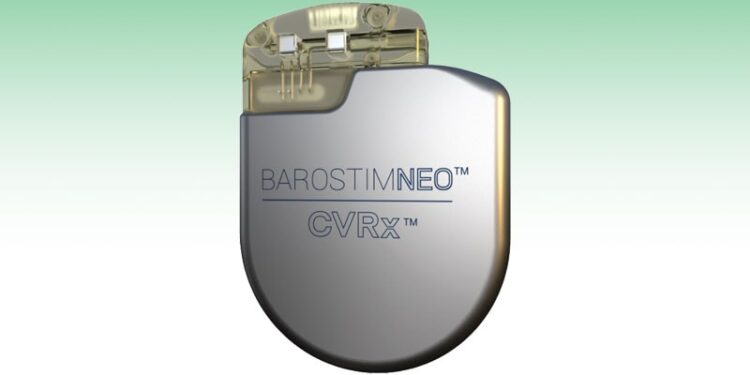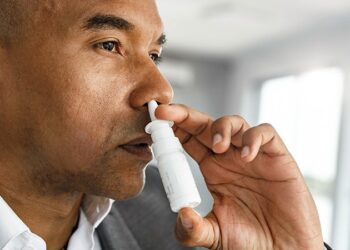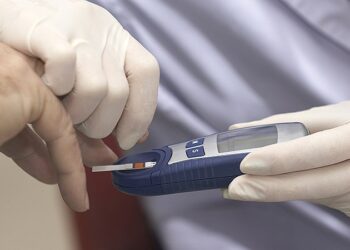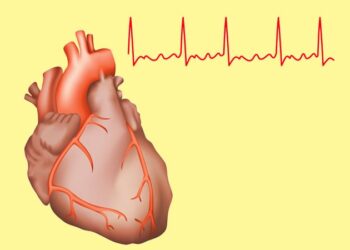MINNEAPOLIS — Remote electrical neuromodulation (REN) appears to be a safe and effective option for a broad range of migraine types including migraine with or without aura and chronic migraine in patients who experience pain following treatment with onabotulinumtoxinA, two new studies suggested.
Results of the first study, which included more than 31,000 individuals — most with migraine with or without aura — showed that use of an REN device provided relief from pain, functional disability, and nausea within 2 hours of treatment.
The second study, which included 60 participants with chronic migraine receiving onabotulinumtoxinA treatment, showed that those using the REN device experienced significantly less pain during and after the procedure compared to those using a sham device.
Patients often look for nonpharmacologic options to treat migraine, such as vitamins, herbs, and chiropractic care, among other options, study investigator Alan M. Rapoport, MD, clinical professor of neurology at the David Geffen School of Medicine at UCLA, told Medscape Medical News.
“We’re always looking for something non-medicinal that patients would be willing to try. It’s really good to have studies that show that this works as well as, or better than, any of those things.”
The findings were presented at the American Headache Society (AHS) Annual Meeting 2025.
Another Treatment Option
Migraine with aura affects approximately 30% of patients, and research into whether it affects severity or response to treatment is limited, the researchers noted.
Nerivio (Theranica; Bridgewater, New Jersey) is FDA-cleared for use in patients as young as 8 years old for the acute and preventive treatment of migraine, including chronic migraine, in adolescents and adults.
In 2021, the AHS recommended REN therapy for patients who do not respond to first-line treatments such as triptans.
Using prospective, real-world data, investigators evaluated 31,715 patients who used an REN device to treat 751,404 acute migraine attacks between January 2019 and September 2024. In both groups, patients had an average age of 37.5 years, and 86.5% were women.
Researchers categorized 311,394 attacks in 9491 patients as migraine with aura, while 440,010 attacks in 22,224 patients had migraine without aura.
Two key endpoints were assessed — the clinical characteristics of migraine with and without aura and the treatment efficacy of REN therapy in both groups. Patients used a smartphone app linked to the REN device to report pain intensity, functional disability, and migraine-associated symptoms during the attack and again 2 hours after its onset.
When comparing migraine with and without aura, researchers classified patients as symptomatic if they reported moderate or severe pain and functional disability during at least half of the treatments.
Similarly, if patients reported photophobia, phonophobia, and/or nausea with a migraine attack with either migraine type at least half the time, patients would be placed in a group for that specific symptom.
The researchers also evaluated pain relief, pain freedom, functional disability relief, and functional disability freedom, which was measured by a consistent positive change in symptom status for at least half of treatments at 2 hours compared with prior treatment.
Compared with patients who did not experience migraine with aura, those who did were significantly younger (36.2 vs 38.0 years) and reported higher rates of moderate to severe pain (91.1% vs 82.3%) and functional disability (68.9% vs 54.8%). They also had a greater prevalence of photophobia (80.6% vs 72.2%), phonophobia (67.2% vs 58.8%), and nausea or vomiting (45.9% vs 35.6%).
Growing Evidence of Efficacy
Findings from both studies add to growing evidence — including a randomized, double-blind, placebo-controlled trial — supporting the effectiveness of REN for migraine pain.
Migraine with aura affects about 30% of patients, but its impact on symptom severity or treatment response remains underexplored.
To address this, researchers analyzed prospective, real-world data from 31,715 patients who used an REN device to treat over 750,000 migraine attacks between January 2019 and September 2024. The average patient age was 37.5 years, and 86.5% were women.
Among them, 311,394 attacks in 9491 patients were classified as migraine with aura, while 440,010 attacks in 22,224 patients were without aura.
Two main endpoints were assessed: clinical characteristics of migraine with vs without aura and the efficacy of REN therapy in both groups. Patients reported pain intensity, functional disability, and associated symptoms via a smartphone app during the attack and again 2 hours later.
Patients were classified as symptomatic if they reported moderate or severe pain and disability in at least half of treatments. Similarly, frequent photophobia, phonophobia, or nausea placed them in symptom-specific groups.
Efficacy outcomes included pain relief, pain freedom, and improvement or resolution of functional disability, all measured by consistent symptom improvement in at least half of treatments at the 2-hour mark.
Compared to those without aura, patients with aura were younger (36.2 vs 38.0 years) and had higher rates of moderate to severe pain (91.1% vs 82.3%), disability (68.9% vs 54.8%), photophobia (80.6% vs 72.2%), phonophobia (67.2% vs 58.8%), and nausea/vomiting (45.9% vs 35.6%).
The majority in both groups experienced pain relief (69.8% vs 67.0%) and functional disability improvement (69.7% vs 62.1%) within 2 hours. Roughly one quarter achieved pain freedom (24.8% vs 26.7%), and about one third reported complete relief from functional disability (34.3% vs 35.6%).
Dramatic Improvement
Of all the outcomes evaluated, only functional disability relief at 2 hours was significantly greater in the migraine with aura group compared to those without aura (P < .001). No significant between-group differences were found for the other pain-related outcomes.
Both groups also experienced similar relief from migraine-associated symptoms at 2 hours, including photophobia (32.0% vs 28.5%), phonophobia (42.8% vs 38.9%), and nausea/vomiting (63.2% vs 55.1%).
Relief from nausea/vomiting was significantly greater in the aura group (P < .001), but there were no significant differences in photophobia or phonophobia relief between the groups.
Regarding safety, only 0.33% of patients reported device-related adverse events, and no serious adverse events were observed.
Rapoport noted that the key takeaway is this: Although migraine with aura tends to be more severe in some respects than migraine without aura, both types showed similarly strong and dramatic improvement with treatment.
OnabotulinumtoxinA was the sole FDA-approved treatment for chronic migraine for many years, and patients have frequently reported pain and anxiety linked to its use as a treatment for chronic migraine, Nan Cheng, MD, assistant professor in the Department of Neurology at the University of California, Irvine School of Medicine, told conference attendees.
The PREEMPT Trial
The PREEMPT protocol clinicians use for treating chronic migraine with onabotulinumtoxinA can range from 31 to 40 injections per session, she noted.
“That can really cause a lot of pain and a lot of anxiety for patients,” Cheng said, noting that there are no “established strategies to reduce procedural pain or to reduce postinjection headache” associated with onabotulinumtoxinA treatment.
For the study, Cheng and colleagues evaluated 60 patients receiving onabotulinumtoxinA treatment for chronic migraine at a single center. Participants had a mean age of 48 years; most were women (81.7%) and averaged 14.7 headache days per month. Nearly half (48.3%) had migraine with or without aura, while 46.6% reported migraine with aura only.
Participants wore either an REN or sham device starting 10 minutes before treatment and removed it afterward. Pain was rated at the start, midpoint, and end of the procedure using a 0-100 visual analog scale. Follow-up calls the next day assessed postprocedure headaches and adverse events. Device use alternated between REN and sham at each treatment visit.
“In the first visit, they would undergo some baseline screening and have their Botox as per usual. In the second phase, they were randomized to either the active device or the sham device while receiving Botox.
“In phase 3, then they crossed over to the other side of their active or sham device with their Botox, so if a patient was on the active device for phase two, they would then be on the sham device for phase three,” Cheng said.
REN therapy significantly reduced intraprocedure pain by 14.8 points and postprocedure pain by 18.8 points compared to the sham device (P < .001 for both).
Patients using the active device were also significantly less likely to develop postprocedure headaches (15.4% vs 54.7%) compared with a baseline rate of 39% (odds ratio, 0.28; P = .008).
The study was stopped early after meeting prespecified criteria for effectiveness. Cheng noted that REN therapy proved to be safe, feasible, and effective, with a true analgesic effect beyond placebo and easy integration into clinical practice.
Sham Comparison Needed
Commenting on the research for Medscape Medical News, Kevin Weber, MD, MHA, assistant professor of neurology and director of the Division of Headache at The Ohio State University Neurological Institute, Columbus, Ohio, said collectively, the studies show that REN therapy can be safe, but more research is needed.
“These studies indicate that this device can be a safe treatment for migraine and also could potentially used for mitigation of Botox procedural pain,” said Weber, who was not involved in the research.
However, there is a lower bar to clear for FDA granting device approvals and clearance compared to when the agency approves a pharmaceutical drug, Weber, who is also associate fellowship director of the United Council for Neurologic Subspecialties headache fellowship, added.
The large sample size in the study of patients with migraine with and without aura supports broader generalizability of the findings, though it lacked a sham control.
Similarly, the chronic migraine study did not assess whether participants could identify whether they received the active or sham REN device, Weber noted.
He emphasized the need for further research, including larger studies incorporating both sham devices and sham testing.
The study of REN therapy in chronic migraine patients receiving onabotulinumtoxinA did not assess whether participants could distinguish between the active and sham devices, Weber noted.
He emphasized the need for larger studies that include both sham devices and sham controls.
“If the sham is good and a true placebo, patients guessing which treatment they received shouldn’t be better than chance,” he said.
Cheng and Rapoport reported having no relevant financial disclosures. Theranica supplied the devices in the chronic migraine study and provided funding for the study evaluating REN in patients with migraine with and without aura. Weber reported his fellowship program received funding from AbbVie, and his headache center received research funding from Lilly and Lundbeck.
Source link : https://www.medscape.com/viewarticle/neuromodulation-effective-migraine-and-without-aura-2025a1000hq5?src=rss
Author :
Publish date : 2025-07-03 12:52:00
Copyright for syndicated content belongs to the linked Source.














